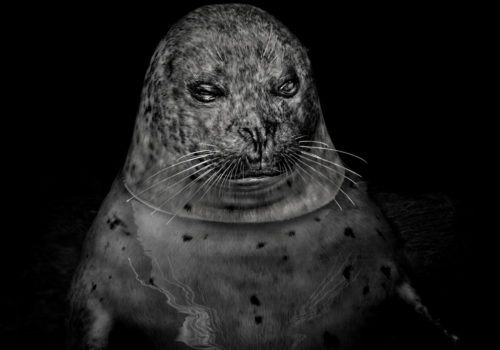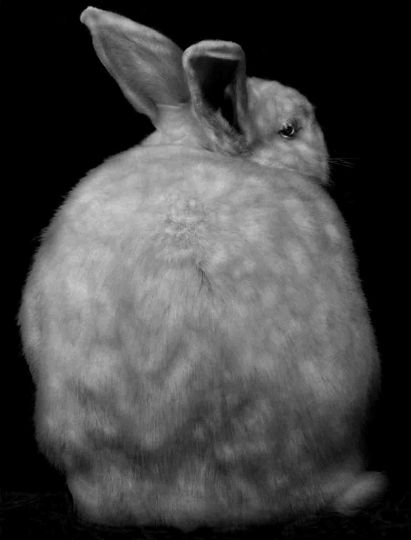“Thank God I didn’t know what I was doing.”
—William Kentridge
Objects of Contemplation
When asked about what I do when I make a photograph, my first thought is that I don’t work conceptually. In other words, I don’t have an idea or concept which I am trying to illustrate, investigate, or portray. Having been a conceptual artist earlier in my life, I discovered this approach to be too confining, so I abandoned it.
What I do instead is act upon a compelling emotion by making an object of contemplation in the form of a photograph. This is the beginning of a process.
In the case of Animal, a project I began in 2007, and in which there are, so far, over a hundred images, the initial emotion was too complex to define, and concerned the reaction I had to a photograph of the only non-human animal with which I have ever lived, Sadie the cat.
More than twenty years old, Sadie the cat had died after suffering from several severe illnesses over several years’ time. During those years, my wife Ellen and I kept Sadie alive by forcing pills down her throat, administering sub-cutaneous fluids by injection to the neck, and in other ways ministering to her failing health. In short, we established the kind of physical intimacy that only caregivers can have with a patient.
After Sadie’s death, Ellen pinned a snapshot she had made of the living Sadie to a wall in our apartment. This was not an ordinary snapshot but an extreme close-up of Sadie apparently staring into the camera’s lens—an image amazingly evocative of her living presence.
As you might imagine, what predominated in my mind at first were feelings of loss and sadness. What followed, however, were feelings of puzzlement about life, both human and non-human. Questions, but vague questions. Perhaps kept purposely vague, because I wanted to experience the emotion as fully as possible. I say “perhaps” because even my thoughts and motivations were unclear. In retrospect, I think I was trying to avoid the phenomenon known as verbal overshadowing in which the left hemisphere of the brain, which thinks in words, displaces the product of the right hemisphere, which thinks in pictures—the description that kills the image.
What I did, eventually, know I wanted to do was photograph a variety of non-human animals so that I could look at them, get to know them better, as one can only do through rendering them in an artistic medium, while allowing myself the freedom to make transformative changes, and then look at them again. These are the aforementioned “objects of contemplation.”
But the process hasn’t ended there. Working on a series of images the way I do, there is always a cumulative effect—the way preceding images affect my current focus. And while I don’t want to describe what I do, or have done, in words, I haven’t avoided the words of others. I’ve read everything I can find, from Darwin to Derrida, on animals—biology, ethology, genetics, philosophy, and ecology.
These readings have informed my work in some small and subtle ways and have certainly made me feel more educated. I now know something of what we share with other animals and something of what we don’t share as separate species—and that, because of what we don’t share, we can never completely know what it is like to be a seal, a monkey, a toucan, a pelican, a fish, a hyena, or a frog.
Elliot Ross, 2010
This is a selection of images I’ve made since the publication of my book Animal (Schilt Publishing, 2010, ISBN: 9789053307304). They will probably appear in my next book from Schilt Publishing, tentatively titled Other Animals.
“Animal” Prints are now in Crocker Art Museum Collection.

















